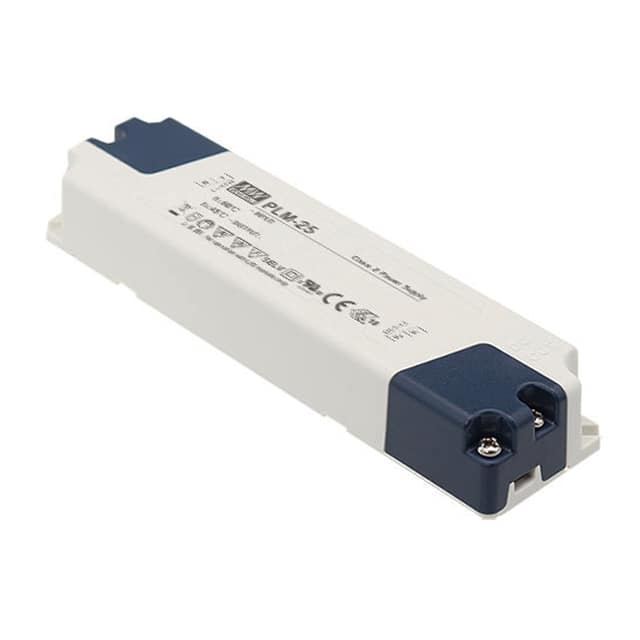PLM-25 (25W) Series, LED Drivers
Results:
4
Manufacturer
Series
Current - Output (Max)
Voltage - Output
Efficiency
Operating Temperature
Termination Style
Voltage - Input (Max)
Voltage - Isolation
Approval Agency
Topology
Size / Dimension
Ratings
Number of Outputs
Voltage - Input (Min)
Power (Watts)
Type
Standard Number
Features
Dimming
Results remaining:4
Applied Filters:
PLM-25 (25W)
About LED Drivers
LED drivers are essential components in the operation of residential and commercial LED lighting systems. Their primary function is to provide a steady and regulated flow of power to the LED lighting elements, ensuring optimal performance and longevity. LED drivers come in various topologies, including AC to AC, AC to DC, boost, buck, and buck-boost configurations. These different topologies allow the LED driver to convert the input voltage to the appropriate form required by the LED lighting system. One of the key features of LED drivers is their ability to maintain a constant current, constant voltage, or a combination of both, depending on the specific requirements of the LED lighting elements. Constant current LED drivers ensure that the LEDs receive a stable and consistent current, preventing overdriving or underdriving, which can result in reduced lifespan or compromised performance. Constant voltage LED drivers, on the other hand, deliver a fixed voltage to the LEDs, allowing for easy installation and compatibility with standard electrical systems. LED drivers are designed to accept a wide range of input voltages, making them suitable for use in various applications and regions. The selection of an LED driver involves considering parameters such as the minimum and maximum input voltage range, the desired output voltage and current (maximum), the overall power output capability, and any specific dimming features required for controlling the brightness of the LED lighting system. By providing the necessary power regulation and conversion, LED drivers ensure that the LED lighting elements operate efficiently, while also protecting them from voltage fluctuations and other electrical irregularities. This not only enhances the performance and reliability of the LED lighting system but also contributes to energy efficiency and cost savings. In summary, LED drivers play a crucial role in the proper functioning of residential and commercial LED lighting systems. Through their ability to regulate and convert power, they ensure that the LED lighting elements receive the appropriate current or voltage, resulting in optimal performance, longevity, and energy efficiency. The selection of an LED driver involves considering various parameters to meet the specific requirements of the LED lighting application.

